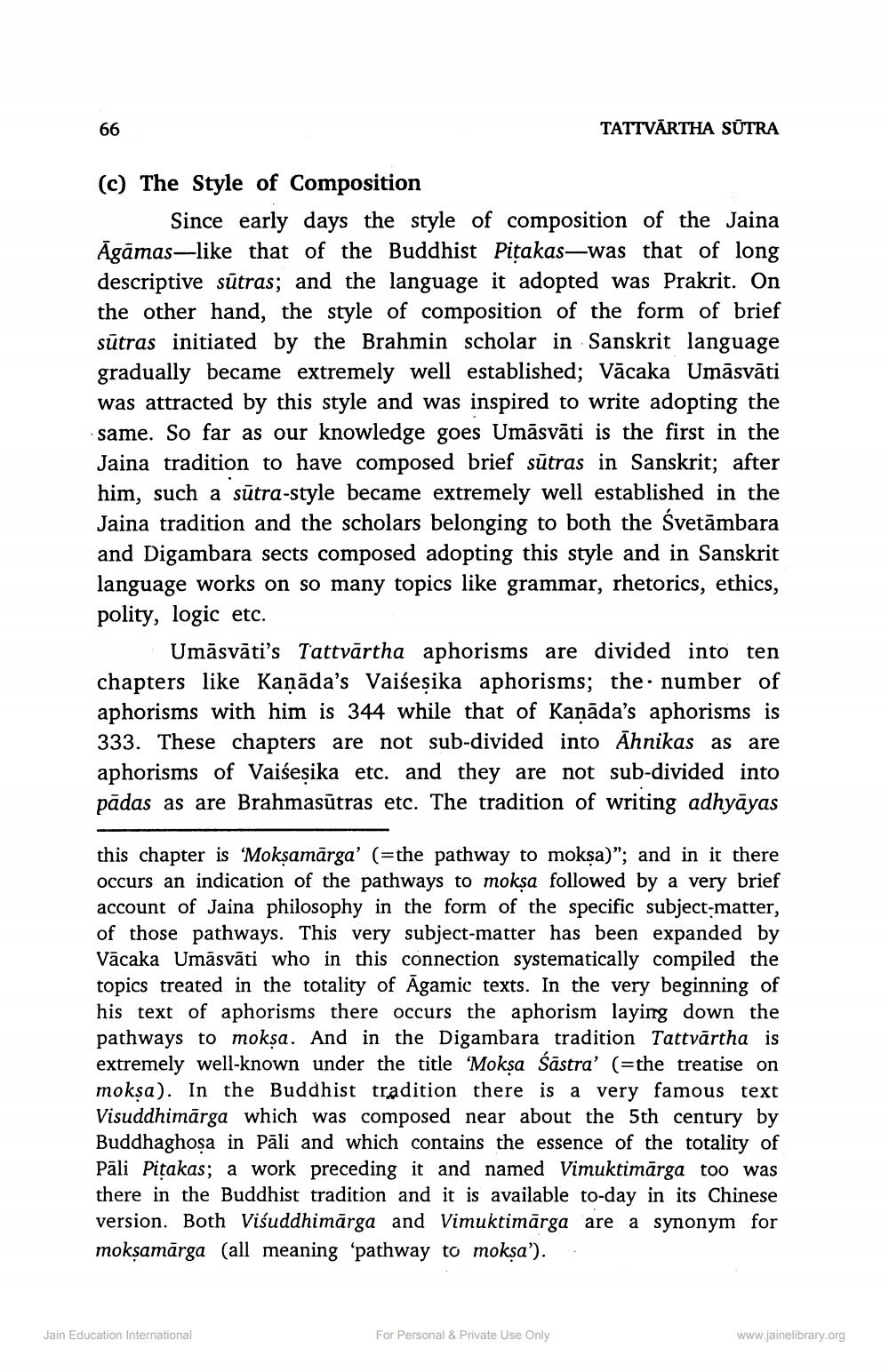________________
66
TATTVĀRTHA SŪTRA
(c) The Style of Composition
Since early days the style of composition of the Jaina Āgāmas—like that of the Buddhist Pițakas—was that of long descriptive sūtras; and the language it adopted was Prakrit. On the other hand, the style of composition of the form of brief sūtras initiated by the Brahmin scholar in Sanskrit language gradually became extremely well established; Vācaka Umāsvāti was attracted by this style and was inspired to write adopting the same. So far as our knowledge goes Umāsvāti is the first in the Jaina tradition to have composed brief sūtras in Sanskrit; after him, such a sūtra-style became extremely well established in the Jaina tradition and the scholars belonging to both the Svetāmbara and Digambara sects composed adopting this style and in Sanskrit language works on so many topics like grammar, rhetorics, ethics, polity, logic etc.
Umāsvāti's Tattvārtha aphorisms are divided into ten chapters like Kanāda's Vaišesika aphorisms; the number of aphorisms with him is 344 while that of Kanāda's aphorisms is 333. These chapters are not sub-divided into Āhnikas as are aphorisms of Vaiseșika etc. and they are not sub-divided into pādas as are Brahmasūtras etc. The tradition of writing adhyāyas
this chapter is 'Moksamārga' (=the pathway to moksa)"; and in it there occurs an indication of the pathways to moksa followed by a very brief account of Jaina philosophy in the form of the specific subject matter, of those pathways. This very subject-matter has been expanded by Vācaka Umāsvāti who in this connection systematically compiled the topics treated in the totality of Agamic texts. In the very beginning of his text of aphorisms there occurs the aphorism laying down the pathways to moksa. And in the Digambara tradition Tattvārtha is extremely well-known under the title 'Moksa Šāstra' (=the treatise on moksa). In the Buddhist tradition there is a very famous text Visuddhimārga which was composed near about the 5th century by Buddhaghosa in Pāli and which contains the essence of the totality Pāli Pitakas; a work preceding it and named Vimuktimārga too was there in the Buddhist tradition and it is available to-day in its Chinese version. Both Visuddhimārga and Vimuktimārga are a synonym for mokşamārga (all meaning 'pathway to moksa').
Jain Education International
For Personal & Private Use Only
www.jainelibrary.org




